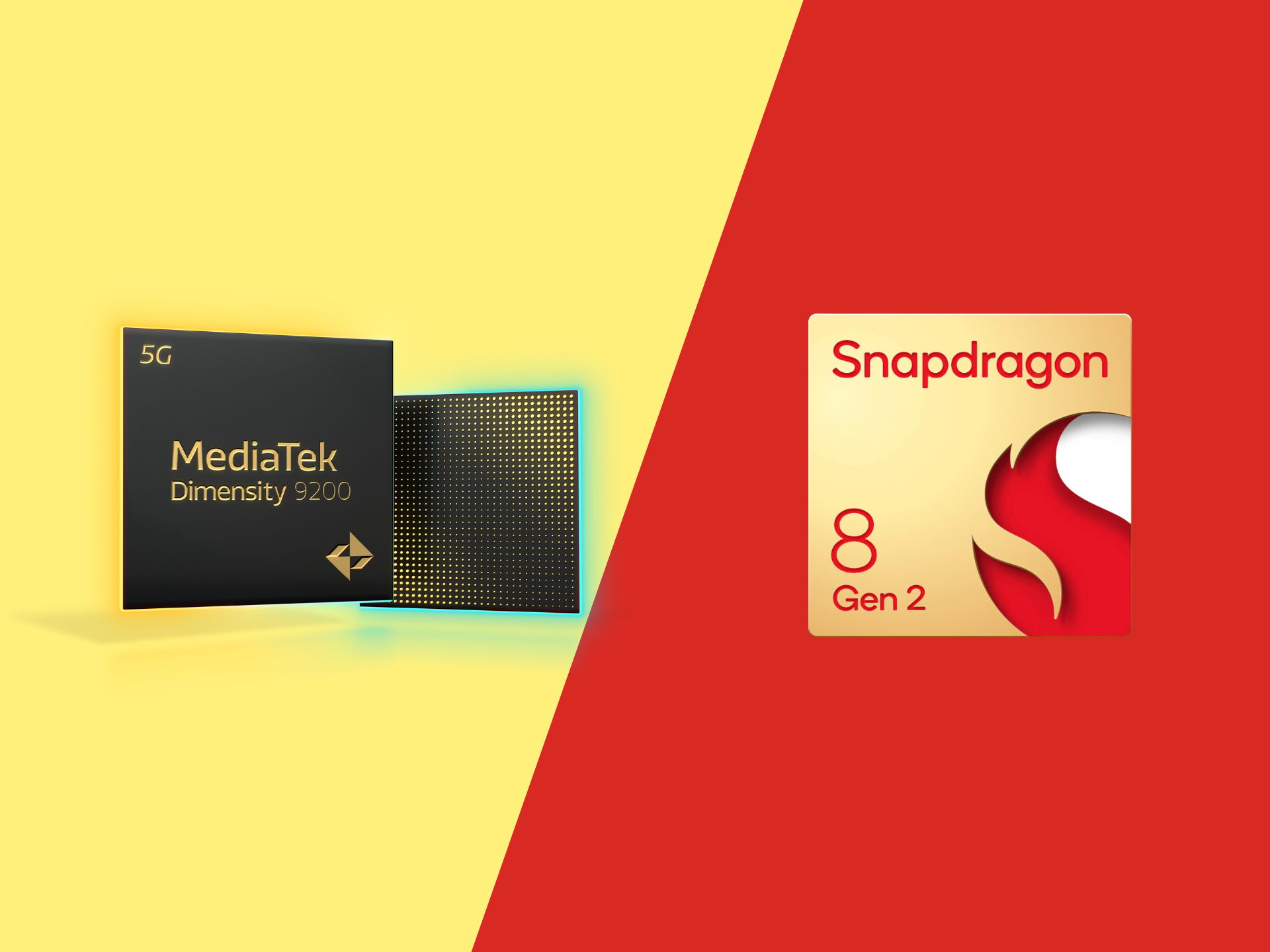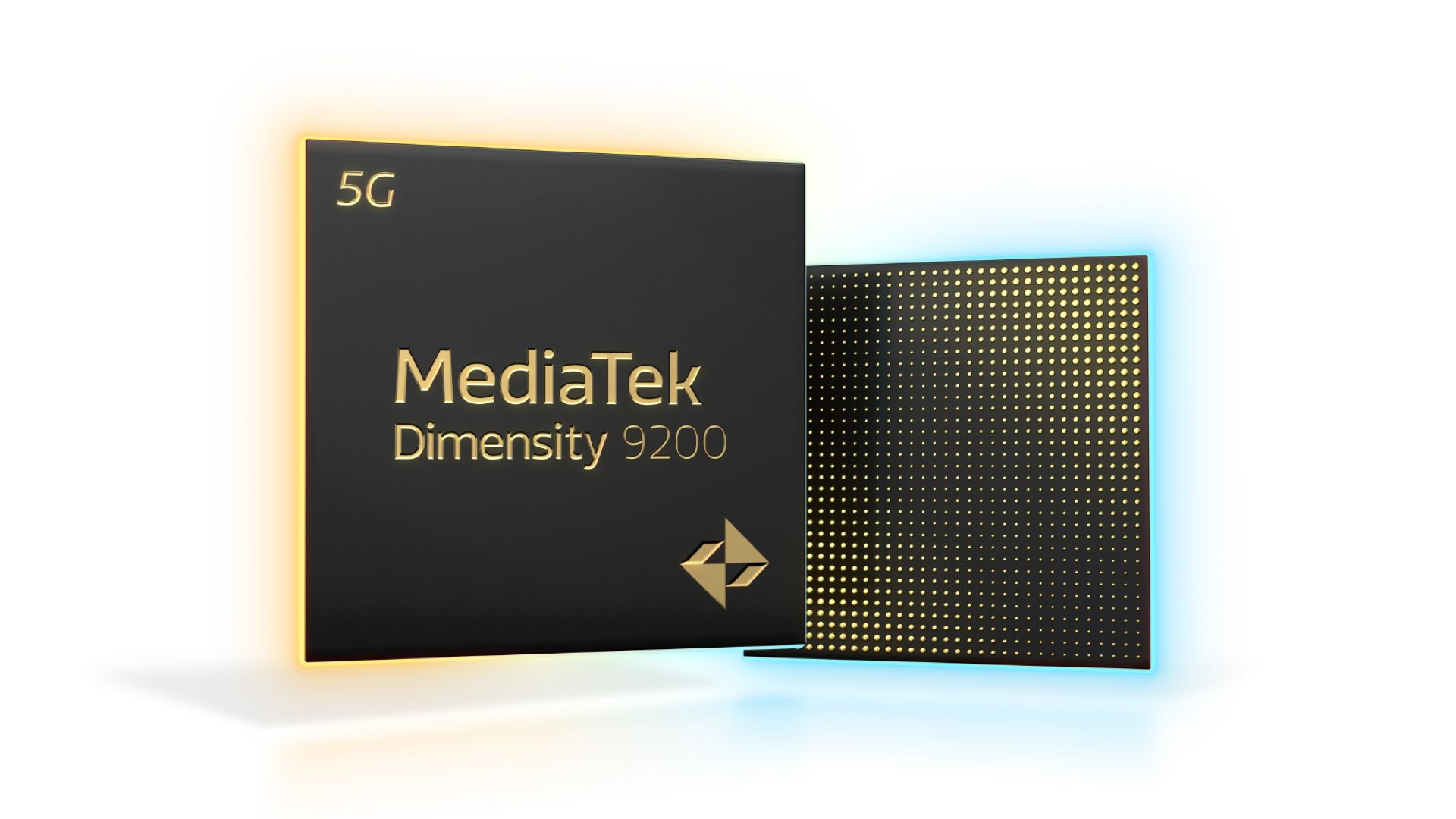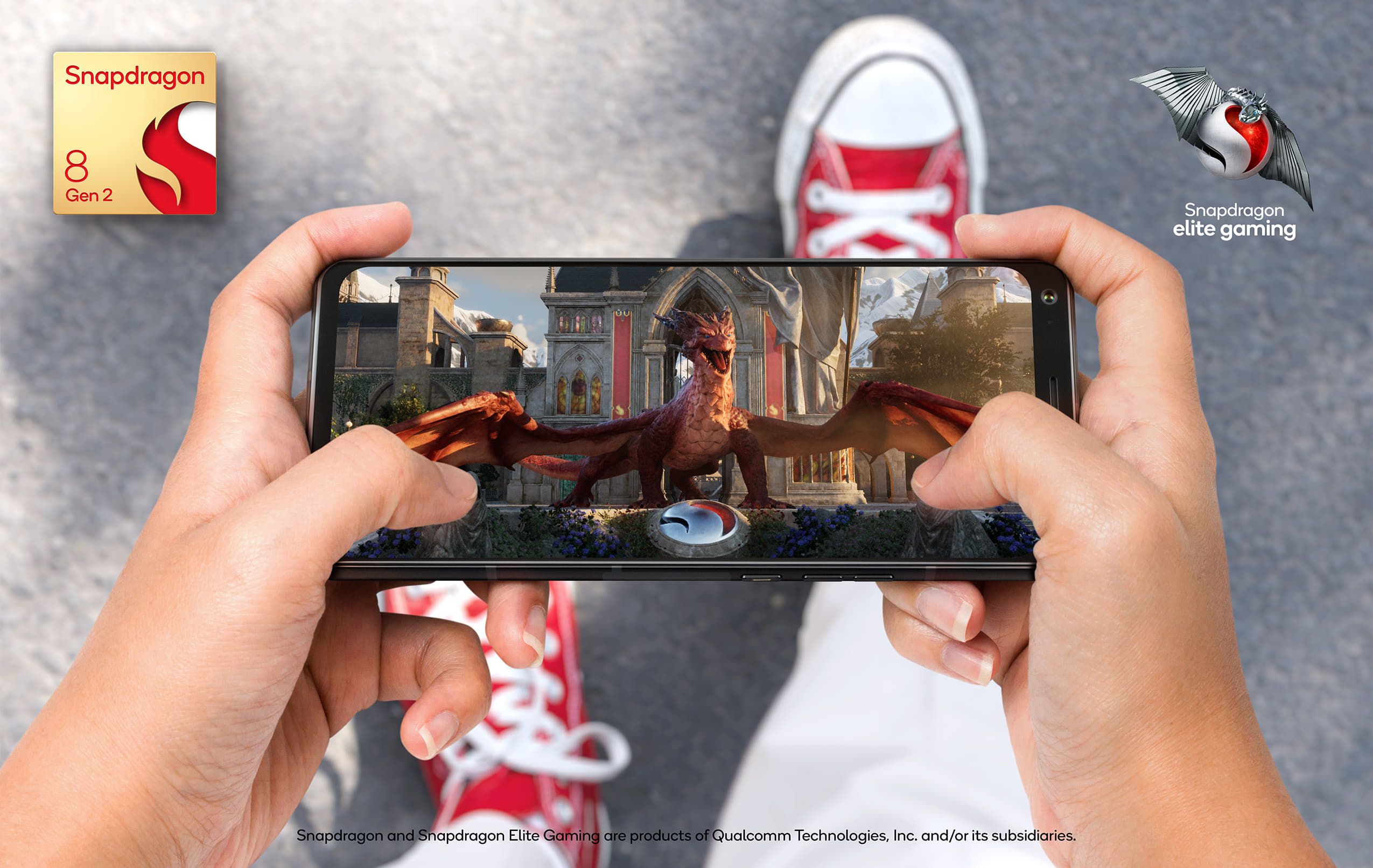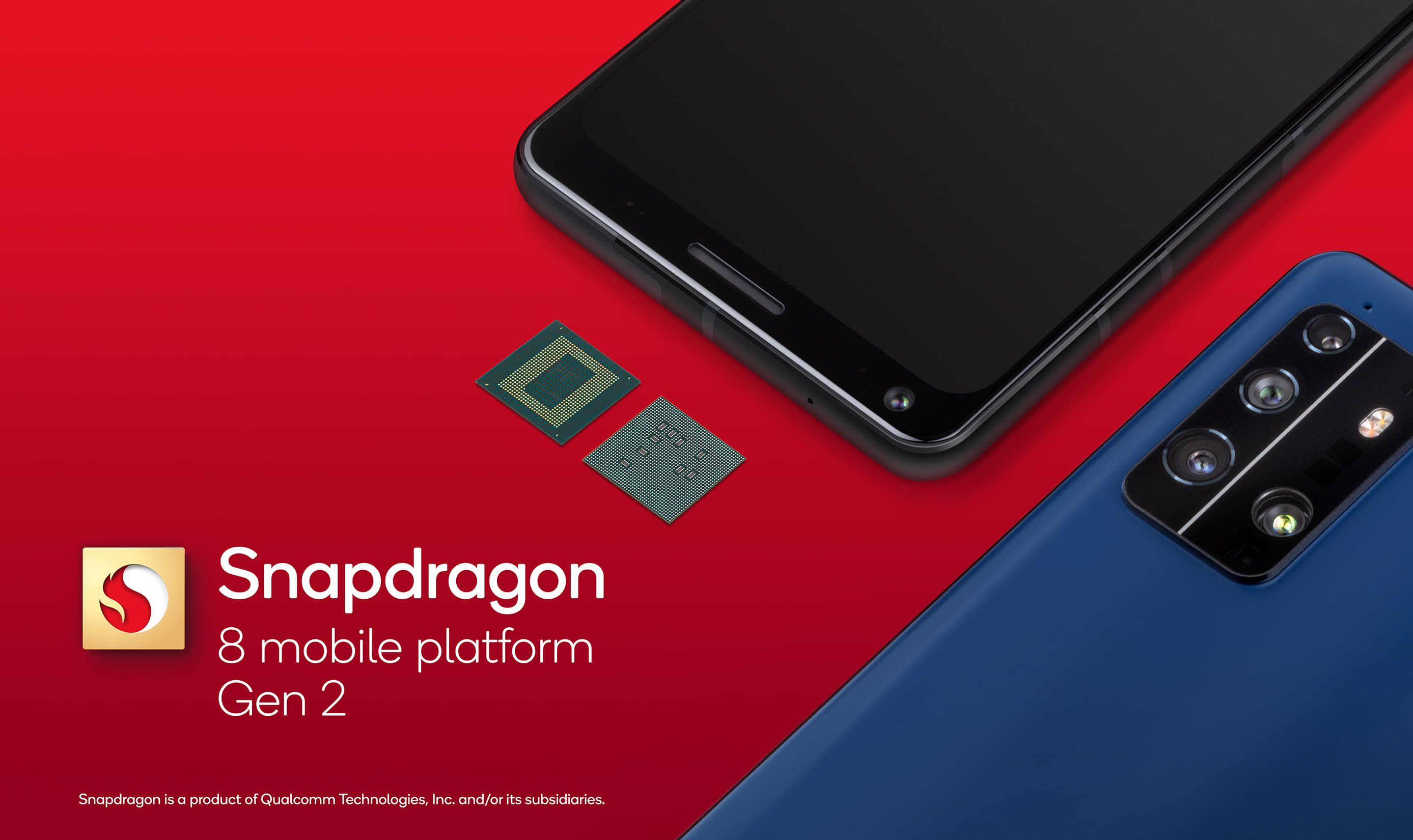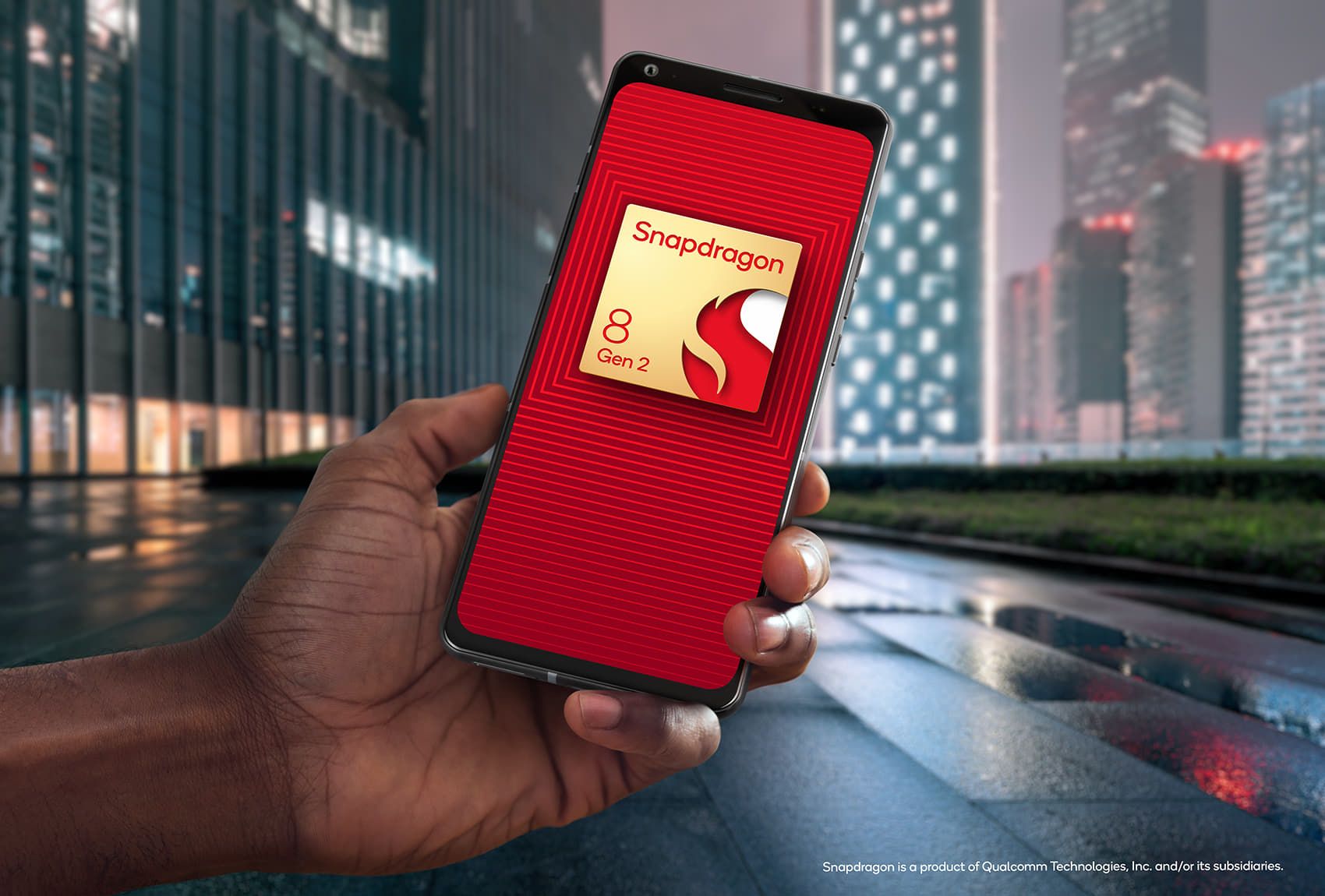Quick Links
Qualcomm unveiled the new Snapdragon 8 Gen 2 chipset at the Snapdragon Summit 2022 event. The new SoC comes with the latest new technologies, including Wi-Fi 7, a faster and more reliable modem, enhanced processing speeds, and a more efficient performance across the board. There are many new AI advancements under the hood, but let’s take a closer look and see how it compares against the previous generation platform, the Snapdragon 8 Gen 1, and the Snapdragon 8 Plus Gen 1 SoCs.
MediaTek has also recently unveiled its Dimensity 9200 flagship chipset with support for Wi-Fi 7, Ray tracing, better power efficiency, and more. Here’s how the Dimensity 9200 compares against the Snapdragon 8 Plus Gen 1.
Availability
Both Qualcomm and MediaTek have announced the dates when their flagship SoCs are expected to become commercially available in consumer products. Qualcomm confirmed that it's Snapdragon 8 Gen 2 chipset would be available to devices by the end of 2022. MediaTek also revealed that its Dimensity 9200 chipset would be commercially available by the end of 2022.
Technical Specifications
| Category | MediaTek Dimensity 9200 | Qualcomm Snapdragon 8 Gen 2 | Qualcomm Snapdragon 8 Plus Gen 1 | Qualcomm Snapdragon 8 Gen 1 |
| Manufacturing Process | 4nm | 4 nm | 4nm | 4nm |
| CPU |
|
Qualcomm® Kryo™ CPU
|
Qualcomm® Kryo™ CPU
|
Qualcomm® Kryo™ CPU
|
| GPU |
|
Qualcomm® Adreno™ GPU
|
Qualcomm® Adreno™ GPU
|
Qualcomm® Adreno™ GPU
|
| Display |
|
|
|
|
| AI |
|
Qualcomm® Sensing Hub
|
|
|
| Memory & Storage |
|
|
|
|
| Image Signal Processor |
|
Qualcomm Spectra™ Image Signal Processor
|
|
|
| Video Capture | Video Encoding
|
|
|
|
| Modem |
|
|
|
|
| Other Connectivity |
|
|
|
|
| Security | Security certifications from Riscure (Hypervisor, Cryptocore), TUViT (Cryptocore), Thales (BROM). | Biometric Authentication (Fingerprint, Iris, Voice, Face) Sensor: Qualcomm® 3D Sonic and Qualcomm® 3D Sonic Max Sensor | Biometric Authentication (Fingerprint, Iris, Voice, Face) Sensor: Qualcomm® 3D Sonic Sensor | Biometric Authentication (Fingerprint, Iris, Voice, Face) Sensor: Qualcomm® 3D Sonic Sensor |
| Charging | N/A | Qualcomm Quick Charge 5 (100W+) | Qualcomm Quick Charge 5 (100W+) | Qualcomm Quick Charge 5 (100W+) |
Design
All four chipsets are based on the 4nm node process, which is worth noting as they’re all very efficient and perform really well under a full load. However, there are major differences between different architectures and different generations. The MediaTek Dimensisty 9200 is based on TSMC’s second-generation 4nm architecture, with additional improvements over the previous generation. Qualcomm didn’t reveal if the Snapdragon 8 Gen 2 uses TSMC’s second-generation 4nm architecture, but there are major improvements on the design part.
CPU
The MediaTek Dimensity 9200 and the Snapdragon 8 Gen 2 use the same Arm Cortex X3 prime cores. The Dimensity 9200 is clocked at 3.05 GHz, while the Snapdragon 8 Gen 2 is clocked slightly higher at 3.2 GHz. The MediaTek chip uses three performance cores clocked at 2.85 GHz, while Snapdragon uses four cores, clocked up to 2.8 GHz. When it comes to efficiency cores, MediaTek uses four Arm Cortex A510 clocked at 1.8 GHz, and Snapdragon uses three cores, clocked once again, slightly higher at 2.0 GHz.
The MediaTek Dimensity 9200 might be using the same prime core as the Snapdragon 8 Gen 2, but it will likely lag behind the Qualcomm chip, due to the slightly lower clock speeds on the Cortex cores. It’s worth noting that benchmarks don’t represent real use cases, but it’s possible the Snapdragon 8 Gen 2 will provide a slightly smoother performance under a full load while playing games and multitasking.
Memory & Storage
Both the Dimensity 9200 and the Snapdragon 8 Gen 2 use the same LPDDR5x memory and support UFS 4.0 storage. The older Snapdragon chips supported up to 3,200 MHz speeds, and supported the slightly older generation LPDDR5 memory. It’s safe to assume that loading times should be smooth on both new flagship chipsets, and multitasking will result in a smooth overall performance due to the fast memories.
GPU
When it comes to the GPU department, there are a lot of similarities between MediaTek’s and Qualcomm’s offerings. Both chips support hardware-accelerated ray tracing, which was previously only available on gaming consoles, computers. It’s a massive leap in the graphical department, and as a result, both chips can deliver incredible visuals and high frame rates.
MediaTek says that the Dimensity 9200 has 32% better graphics while consuming 41% less power than the Dimensity 9000. Qualcomm also claims that its new Adreno GPU can deliver 25% faster performance, and the Kryo CPU is up to 40% more power efficient, providing better battery life when playing games for an extended period.
The older Snapdragon 8 Plus Gen 1 and the Snapdragon 8 Gen 1 don’t support ray tracing or any of the new features, but they’re all still more than capable of handling games with high frame rates and excellent visuals and effects.
Camera
The MediaTek Dimensity 9200 has many improvements over the Dimensity 9000 Plus, using the Imagiq 890 Image Signal Processor (ISP). The Dimensity can capture 4K HDR content on three cameras simultaneously, and support the native RGBW sensor. It’s faster, smarter, and much smoother compared to the Dimensity 9000 Plus, and it supports up to 320MP (all sensors, combined) camera sensors.
On the other hand, Qualcomm managed to outdo itself and provide even bigger improvements for its Spectra ISP. The Qualcomm Spectra Image Signal Processor also features a triple 18-bit ISP. The Snapdragon 8 Gen 2 not only supports up to 8K @ 30FPS video recording, but it also supports HDR capture. It supports 4K video @ 120 FPS, and Slow-mo at 720 @ 960 FPS. The camera also supports up to 200 megapixel sensors, and it can capture in 10-bit HEIC and HEIC photos, as well as 8K HDR.
Both ISPs feature AI-based face detection, autofocus, and can un-blur photos thanks to the advanced technologies and the powerful chips. The chips are also better and faster at detecting scenes and applying various improvements to both photos and videos to process them and improve the quality in both day and night.
Display
The MediaTek Dimensity 9200 can boast up to 5K displays with 60Hz refresh rate. In addition, the chip supports displays at up to WHQD resolution and at up to 144Hz refresh rate, and Full HD+ panels at up to 240Hz. MediaTek says that its Intelligent Display Sync 3.0 technology provides real-time adaptive refresh rate and can provide up to 35% panel power savings. There’s also support for HDR content intelligent brightness adjustments, as well as blur reduction and blue light filtering.
The Snapdragon 8 Gen 2 supports up to 4K at 60Hz displays, and QHD+ at 144Hz. The display support is richer on the Qualcomm chip, as it also supports HDR10, HDR10+, HDR vivid, and even Dolby Atmos on 10-bit displays. Likewise, the Snapdragon variant supports various formats and standards, and has hardware-accelerated H.265 and VP9 decoder for even more possibilities.
The older Snapdragon chips also fare well and support similar standards as the Snapdragon 8 Gen 2.
Connectivity
Connectivity wise, the Dimensity 9200 and the Snapdragon 8 Gen 2 are excellent. Both chips support Wi-Fi 7. The MediaTek’s chip can achieve downlink speeds of up to 6.5 Gbps, and the Dimensity’s modem supports both the mmWave and sub-6 GHz 5G standards.
The Snapdragon 8 Gen 2 is powered by the new Qualcomm FastConner 7800 system, which supports peak speeds up to 5.8 Gbps. The 5G speed is even more impressive thanks to the new Snapdragon X70 5G Modem, which supports downlink speeds up to 10 Gbps, and uplink speeds up to 3.5 Gbps. The networking capability has also improved greatly, as it now supports global 5G multi-SIM support, various other improvements to improve connectivity, speeds, and reliability.

